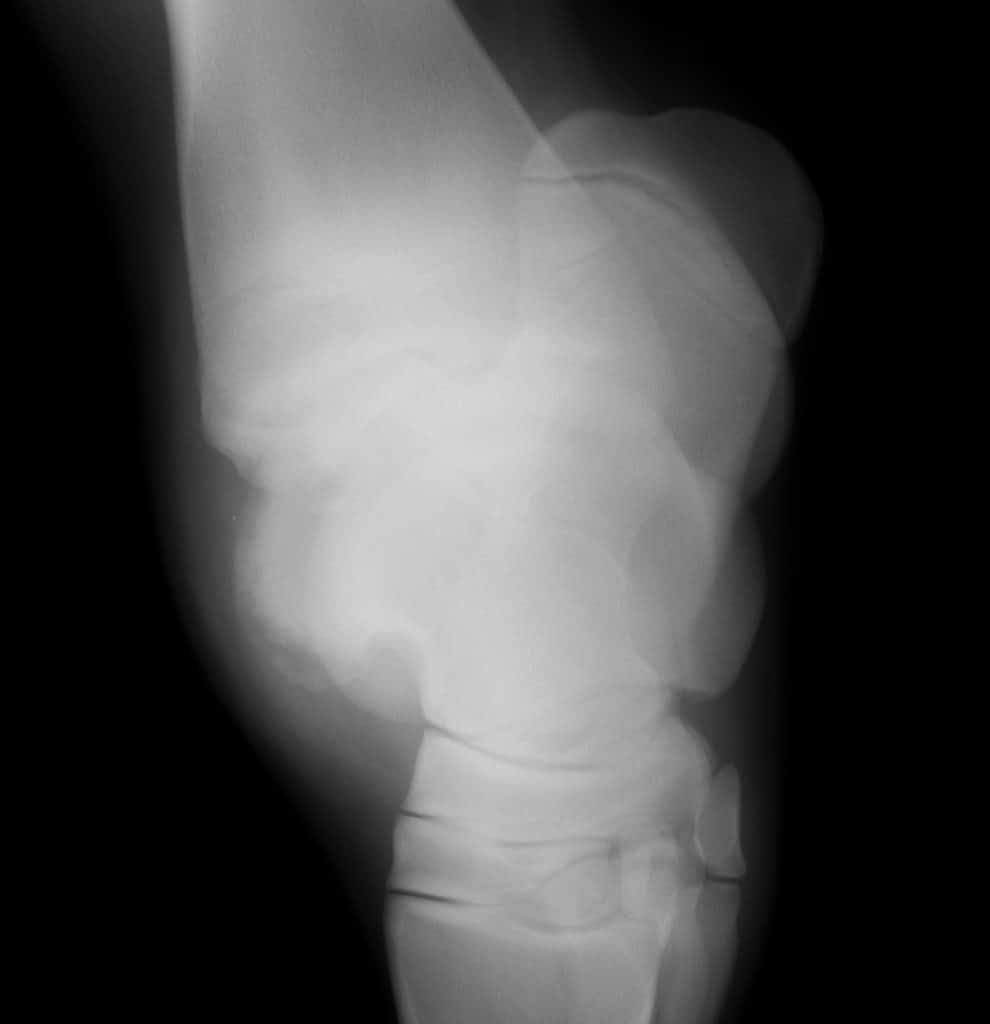
Some Osteochondral Lesions Could Resolve Naturally
Research shows that many radiographic findings in weanlings can change–usually for the better–within a year.

Research shows that many radiographic findings in weanlings can change–usually for the better–within a year.

The field protocol is designed to be low-risk, efficient, economical, and effective in identifying lesions.

Researchers are investigating how young horse management practices can impact osteochondral lesions.

Osteochondrosis is the central topic of a special issue of the Veterinary Journal.

English researchers have taken a step forward in understanding a potential genetic component of OC.

Researchers found that foals turned out to pasture had similar joint defects as those exercised daily.
When a horse needs surgery, what’s his prognosis for a full recovery? What problems can occur during recovery?
Cornell University researchers are examining the use of degradable pins for treating OCD lesions in horses.
In 2009 the AAEP Foundation conducted a survey to assess the thoughts and opinions of the membership in defining and prioritizing the needs for equine health research. This followed an initial survey in 2003 to establish needs for equine research…
Osteoarthritis of the distal (lower) hock joints is a common performance problem in sport horses.
Measurement of osteocalcin (a marker of joint metabolism) in 2-week-old foals might be useful for identifying foals at risk for developing osteochondrosis.
Osteochondrosis (OC) is a developmental orthopedic disease that results from a
Take more than 1,000 veterinarians and veterinary students from around the globe, some armed with presentations representing thousands of hours worth of equine research, and add to it some tartan, bagpipes, and Scottish fare. Drop it all into a
Two veterinarians compiled the latest on equine orthopedic topics and presented it to their colleagues at the 46th British Equine Veterinary Association Congress, held in Edinburgh, Scotland
Each year at the British Equine Veterinary Association Congress (BEVA), the organization awards prizes to top student presentations in the clinical research portion of the program. The 2007 award winners? talks were both rooted in orthopedics,
I have a Trakehner/Thoroughbred cross that starts flexing his hind legs rather noticeably when trotting
Both intra-articular (in the joint) and intravenous (in the vein) injections of hyaluronan (HA) have been proven effective in treating joint diseases, such as osteochondritis dissecans (OCD) lesions, over the years. However, a relative newcomer
Stay on top of the most recent Horse Health news with
"*" indicates required fields